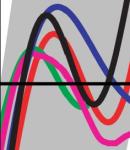By Deep Climate
Today I continue my examination of the key analysis section of the Wegman report on the Mann et al “hockey stick” temperature reconstruction, which uncritically rehashed Steve McIntyre and Ross McKitrick’s purported demonstration of the extreme biasing effect of Mann et al’s “short-centered” principal component analysis.
First, I’ll fill in some much needed context as an antidote to McIntyre and McKitrick’s misleading focus on Mann et al’s use of principal components analysis (PCA) in data preprocessing of tree-ring proxy networks. Their problematic analysis was compounded by Wegman et al’s refusal to even consider all subsequent peer reviewed commentary – commentary that clearly demonstrated that correction of Mann et al’s “short-centered” PCA had minimal impact on the overall reconstruction.
Next, I’ll look at Wegman et al’s “reproduction” of McIntyre and McKitrick’s simulation of Mann et al’s PCA methodology, published in the pair’s 2005 Geophysical Research Letters article, Hockey sticks, principal components, and spurious significance). It turns out that the sample leading principal components (PC1s) shown in two key Wegman et al figures were in fact rendered directly from McIntyre and McKitrick’s original archive of simulated “hockey stick” PC1s. Even worse, though, is the astonishing fact that this special collection of “hockey sticks” is not even a random sample of the 10,000 pseudo-proxy PC1s originally produced in the GRL study. Rather it expressly contains the very top 100 – one percent – having the most pronounced upward blade. Thus, McIntyre and McKitrick’s original Fig 1-1, mechanically reproduced by Wegman et al, shows a carefully selected “sample” from the top 1% of simulated “hockey sticks”. And Wegman’s Fig 4-4, which falsely claimed to show “hockey sticks” mined from low-order, low-autocorrelation “red noise”, contains another 12 from that same 1%!
Finally, I’ll return to the central claim of Wegman et al – that McIntyre and McKitrick had shown that Michael Mann’s “short-centred” principal component analysis would mine “hockey sticks”, even from low-order, low-correlation “red noise” proxies . But both the source code and the hard-wired “hockey stick” figures clearly confirm what physicist David Ritson pointed out more than four years ago, namely that McIntyre and McKitrick’s “compelling” result was in fact based on a highly questionable procedure that generated null proxies with very high auto-correlation and persistence. All these facts are clear from even a cursory examination of McIntyre’s source code, demonstrating once and for all the incompetence and lack of due diligence exhibited by the Wegman report authors.

 This is the final instalment in a series of posts documenting dubious scholarship and unattributed sources in the background chapter of the touchstone of climate contrarians known as the
This is the final instalment in a series of posts documenting dubious scholarship and unattributed sources in the background chapter of the touchstone of climate contrarians known as the 
 Do you have what it takes to be a climate auditor? Try the following fun test and find out. And at the same time, you can’t help but learn something about the fine art of argumentation from charts as practiced by the master himself, Steve McIntyre, and refined in his most devoted media outlet, the U.K. based Mail on Sunday.
Do you have what it takes to be a climate auditor? Try the following fun test and find out. And at the same time, you can’t help but learn something about the fine art of argumentation from charts as practiced by the master himself, Steve McIntyre, and refined in his most devoted media outlet, the U.K. based Mail on Sunday.